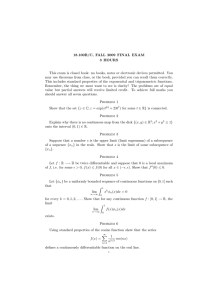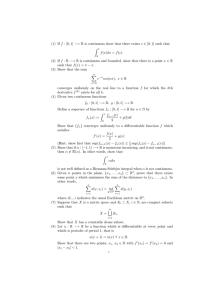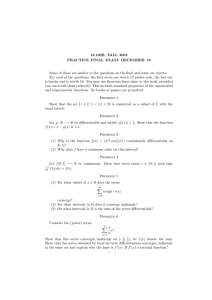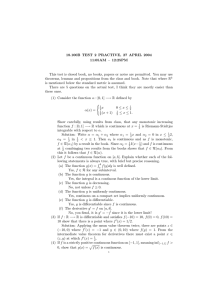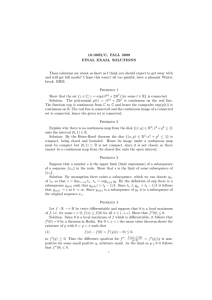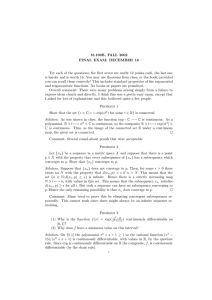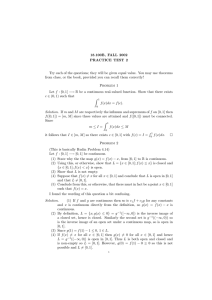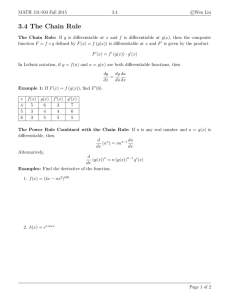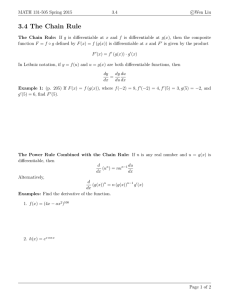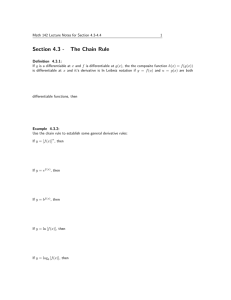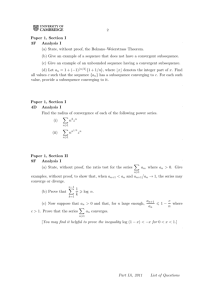18.100B, FALL 2002 FINAL EXAM: DECEMBER 16
advertisement
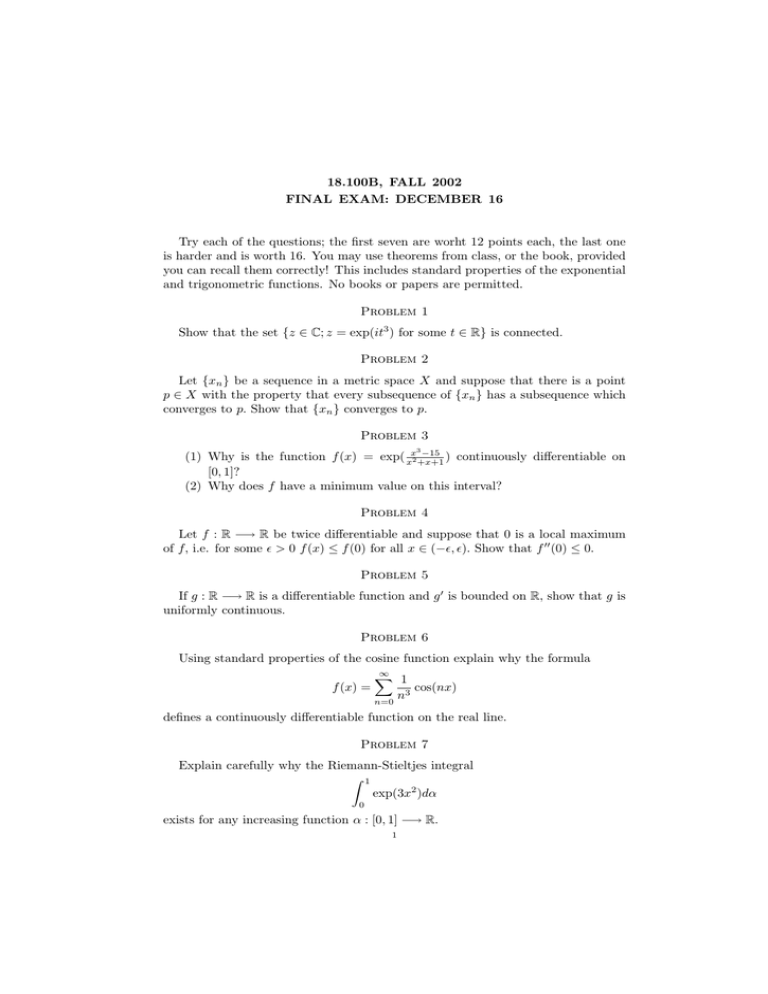
18.100B, FALL 2002
FINAL EXAM: DECEMBER 16
Try each of the questions; the first seven are worht 12 points each, the last one
is harder and is worth 16. You may use theorems from class, or the book, provided
you can recall them correctly! This includes standard properties of the exponential
and trigonometric functions. No books or papers are permitted.
Problem 1
Show that the set {z ∈ C; z = exp(it3 ) for some t ∈ R} is connected.
Problem 2
Let {xn } be a sequence in a metric space X and suppose that there is a point
p ∈ X with the property that every subsequence of {xn } has a subsequence which
converges to p. Show that {xn } converges to p.
Problem 3
3
−15
) continuously differentiable on
(1) Why is the function f (x) = exp( xx2 +x+1
[0, 1]?
(2) Why does f have a minimum value on this interval?
Problem 4
Let f : R −→ R be twice differentiable and suppose that 0 is a local maximum
of f, i.e. for some > 0 f (x) ≤ f (0) for all x ∈ (−, ). Show that f 00 (0) ≤ 0.
Problem 5
If g : R −→ R is a differentiable function and g 0 is bounded on R, show that g is
uniformly continuous.
Problem 6
Using standard properties of the cosine function explain why the formula
f (x) =
∞
X
1
cos(nx)
n3
n=0
defines a continuously differentiable function on the real line.
Problem 7
Explain carefully why the Riemann-Stieltjes integral
Z 1
exp(3x2 )dα
0
exists for any increasing function α : [0, 1] −→ R.
1
2
18.100B, FALL 2002 FINAL EXAM: DECEMBER 16
Problem 8
Let A : [0, 1]2 −→ R be a continuous function satisfying
1
sup |A(x, y)| ≤ .
2
2
[0,1]
(1) Show that if f ∈ C([0, 1]) then
Z 1
g(x) =
A(x, y)f (y)dy ∈ C([0, 1]).
0
(2) Estimate kgk = sup[0,1] |g(x)| in terms of kf k.
(3) If h ∈ C([0, 1]) is a fixed function show that
Z 1
A(x, y)f (y)dy
(Gf )(x) = h(x) +
0
defines a contraction G on C([0, 1]) sending f to Gf.
(4) Show that there exists a unique f ∈ C([0, 1]) such that
Z 1
f (x) = h(x) +
A(x, y)f (y)dy ∀ x ∈ [0, 1].
0
